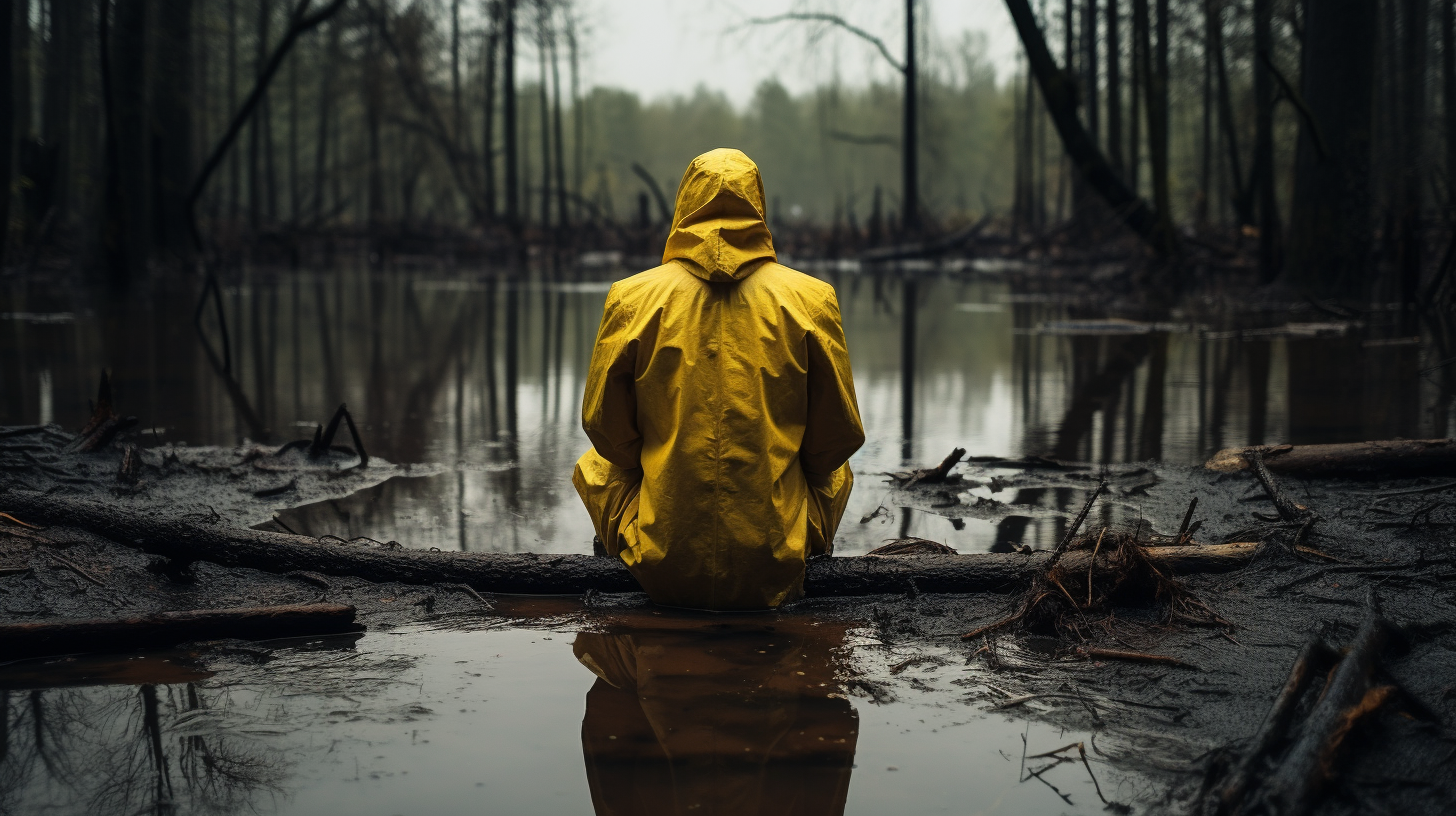In a world where the sky once wept sustenance, it now cries tears of acerbic destruction. Isolated Rains of Acridity is a distressing glimpse into the present repercussions of environmental recklessness—a world where each drop of rain no longer signifies life, but a hazardous chemical maelstrom.
Just a few years ago, acid rain was the stuff of environmental doomsaying, a distant possibility dismissed by many. Now, the isolated storms that drench our landscapes are not only a testament to what we ignored but a bleak vanguard of our new reality; they are unpredictable, devastating, and, worst of all, increasingly frequent.
The earth below these isolated rains tells the morose tale of a soil chemistry gone wrong. Once fertile grounds turn barren, with crop yields plunging as the soil can’t buffer the acidic assault from above. The ramifications are dire: food scarcity, a spike in prices, and the specter of hunger now loom larger than ever.
Gone are the days where rain sparked a chorus of life, a soft pattering harmony. Now, the sound of rain evokes a dissonant clatter, a signal to rush indoors and brace for the aftermath. Inhabitants of areas affected by these isolated acidic storms have adapted to an eerie routine involving protective gear and indoor confinement during rainfalls, with children perplexedly observing the tainting of their once-safe havens.
The art of shaping life through water has morphed into art born of destruction. While our last issue featured a burgeoning art form where acid erosion crafts sculptures out of what was once intact – a poignant metaphor for our societal dissolution – we now see further manifestations of despondency in how humanity expresses its despair and adapts to survive.
Amidst this turmoil, urban architecture is changing—no longer just reaching for the stars but shielded from the sky. New structures with acid-resistant materials surface, yet they stand as stark monuments to the world that could have been, had there been foresight, had there been real action.
In the absence of green canopies that once absorbed the acidic barrage, our technologically retrofitted forests now aim to emulate what was once a natural safeguard. Mechanical trees stand guard—an army of artificial sentinels meant to do the job of their now-extinct biological predecessors. Ironically, these machines represent both humanity’s ingenuity and its folly.
The forecast is grim. The Isolated Rains of Acridity show little sign of receding – instead, they form part of the new routine that marks our days and infiltrates our fears. Clean water, once abundant, is now a rarity—commoditized, contested, and coveted.
The human spirit, however, clings to survival, to adaptation. In these sodden streets that feel the touch of acrid rains, stories emerge of community, resilience, and ingenuity. They build defiantly, craft resourcefully, and hope silently—an incongruous sliver of optimism in a climate that has little room for such luxuries.
What does the future hold when nature, the very essence of life and growth, becomes an adversary? It’s a question that hangs heavy in the air, as heavy as the clouds that once brought us life but now bring only ruin. From our last chronicled account to this current entry, our reality seems more dystopian by the day—a stark reminder that each choice we make etches itself indelibly into the canvas of tomorrow.
